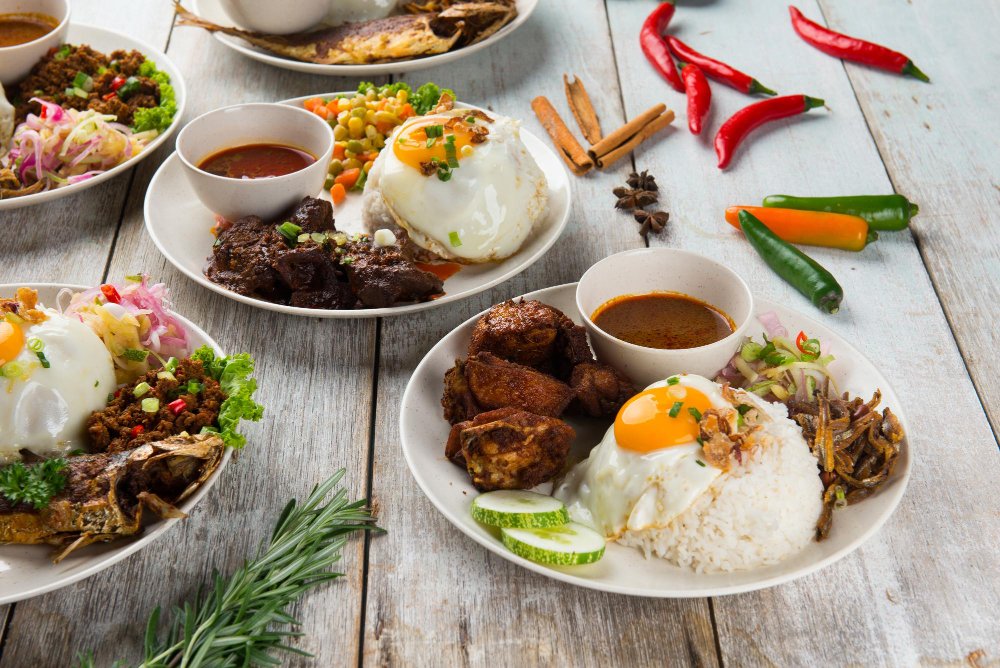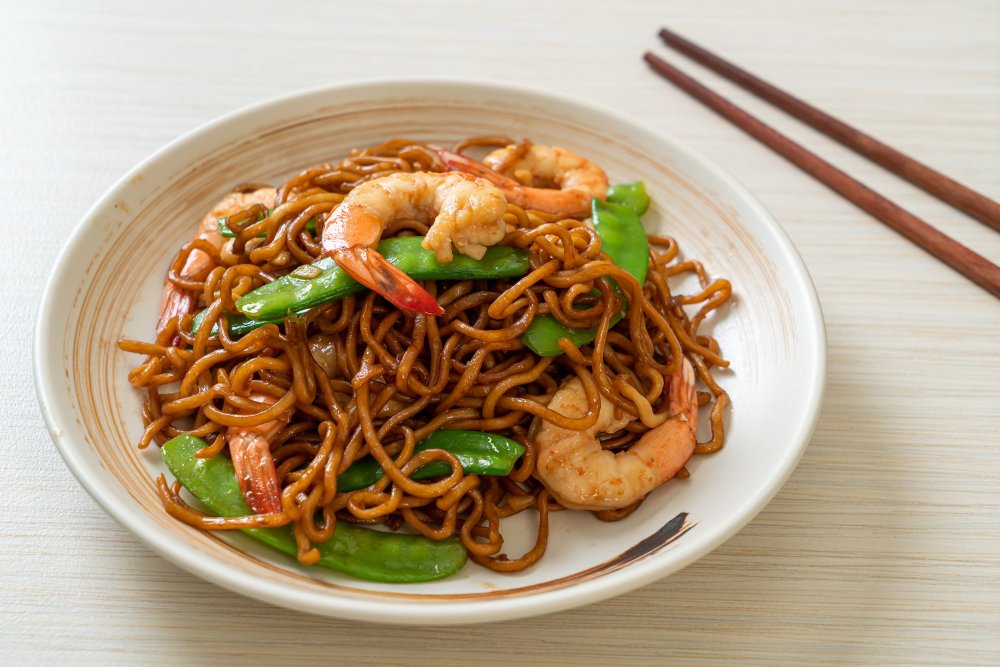
Introduction to Filipino Cuisine
Filipino cuisine stands as a testament to the rich tapestry of cultural influences that have shaped the Philippines over centuries. The archipelago’s culinary landscape is a vibrant blend of indigenous traditions and various foreign influences, each contributing to the unique and diverse nature of its dishes. This fusion results in a gastronomic tradition that is both deeply rooted in history and continually evolving.
Spanish colonization, which spanned over three centuries, has left an indelible mark on Filipino food. Many beloved Filipino dishes, such as adobo and lechon, bear the unmistakable imprint of Spanish culinary techniques and ingredients. The Spanish influence is evident in the use of garlic, vinegar, and the practice of marinating meats, which are now quintessential aspects of Filipino cooking.
Similarly, Chinese traders introduced a variety of ingredients and cooking methods that have become integral to Filipino cuisine. Staples such as noodles, soy sauce, and the concept of stir-frying are all contributions from Chinese culture. Dishes like pancit and lumpia are direct descendants of these interactions, showcasing the seamless integration of Chinese flavors into the Filipino palate.
The American colonial period also brought significant changes to Filipino food culture. The introduction of canned goods, breakfast cereals, and fast food items like hamburgers and fried chicken have all found their place in the modern Filipino diet. This period also saw the popularization of sweet desserts and snacks, adding another layer of variety to the culinary scene.
Indigenous Filipino traditions, however, remain the cornerstone of the country’s culinary identity. Ingredients like coconut, rice, and an array of tropical fruits are staples in many traditional dishes. Methods such as grilling, roasting, and steaming are time-honored practices that continue to be prevalent. Local delicacies often highlight the bounty of the land and sea, celebrating the natural flavors of the Philippines.
Overall, Filipino cuisine is a dynamic and flavorful mosaic, continually enriched by its historical and cultural heritage. This blend of influences has resulted in a culinary tradition that is both diverse and uniquely Filipino, offering a rich array of flavors and textures that are sure to captivate any food enthusiast.
Staple Ingredients in Filipino Cooking
Filipino cuisine is renowned for its rich flavors and diverse textures, largely attributed to its staple ingredients. Central to Filipino cooking is rice, the backbone of most meals. Whether steamed, fried, or transformed into delicacies like bibingka (rice cake) and suman (rice dessert), rice is indispensable. Its versatility allows it to complement a wide range of dishes, making it a fundamental ingredient in Filipino households.
Coconut, in its various forms, also plays a significant role in Filipino cuisine. Coconut milk and cream add depth and richness to stews, curries, and desserts. Dishes such as ginataang kalabasa (squash in coconut milk) and buko pie (young coconut pie) showcase the ingredient’s ability to enhance both savory and sweet creations. Additionally, coconut oil is often used for frying and sautéing, imparting a subtle flavor to the food.
Fish sauce, locally known as patis, is another cornerstone of Filipino cooking. This salty, umami-rich condiment is used to season various dishes, from soups and stews to marinades. It adds a distinct taste that is quintessential to Filipino flavors. Similarly, vinegar, particularly the native palm vinegar, is used extensively. Vinegar’s acidic tang is crucial in dishes like adobo, where it tenderizes meat and balances other flavors.
Tropical fruits such as mangoes, pineapples, and bananas are also integral to Filipino cuisine. These fruits are used in both savory and sweet dishes, providing natural sweetness and a burst of freshness. For instance, green mangoes are a common ingredient in salads, while ripe mangoes are used in desserts like mango float and halo-halo.
Globally, these ingredients can be sourced from Asian supermarkets, specialty stores, and online retailers. The international availability of these staples allows food enthusiasts worldwide to recreate the vibrant and unique tastes of Filipino cuisine in their own kitchens.
Popular Filipino Dishes
Filipino cuisine, renowned for its rich and diverse flavors, boasts an array of dishes that have captured the hearts and palates of many. One of the most iconic dishes is Adobo, often considered the national dish of the Philippines. Adobo is a savory and slightly tangy stew made with meat, usually chicken or pork, marinated in soy sauce, vinegar, garlic, and spices. Its origins can be traced back to the Spanish colonial period, with the term “adobo” derived from the Spanish word “adobar,” meaning “to marinate.” This dish is beloved for its simplicity, adaptability, and the perfect balance of salty and sour flavors.
Another beloved Filipino dish is Sinigang, a tamarind-based soup known for its sour and savory taste. Sinigang can be made with various types of meat, such as pork, beef, shrimp, or fish, and is often loaded with vegetables like kangkong (water spinach), radish, and eggplant. This dish reflects the Filipino flair for combining fresh, local ingredients to create a comforting and nourishing meal. The tanginess of Sinigang is what sets it apart, making it a staple in Filipino households.
Lechon, another iconic dish, is a whole roasted pig that is a centerpiece at festive occasions and celebrations. The practice of roasting a whole pig dates back to pre-colonial times, and it has become a symbol of Filipino hospitality and generosity. Lechon is characterized by its crispy, golden-brown skin and tender, flavorful meat, often seasoned with aromatics like lemongrass, garlic, and bay leaves. It is typically served with a liver-based sauce or a vinegar dip to enhance its savory profile.
Kare-Kare is a rich and hearty stew made with oxtail, tripe, and a variety of vegetables simmered in a thick peanut sauce. This dish is traditionally served with bagoong (fermented shrimp paste) on the side, adding a savory depth to its nutty flavor. Kare-Kare’s roots can be traced to the Pampanga region, known for its culinary heritage. The unique combination of ingredients and the labor-intensive preparation make Kare-Kare a cherished dish in Filipino cuisine.
For dessert, Halo-Halo stands out as a quintessential Filipino treat. The name “halo-halo” means “mix-mix” in Tagalog, reflecting the dessert’s diverse ingredients. It typically includes a medley of sweetened fruits, jellies, beans, and shaved ice, topped with evaporated milk and sometimes ice cream or leche flan. Halo-Halo is a refreshing and colorful dessert that showcases the Filipino love for blending different textures and flavors into a harmonious and delightful experience.
Filipino cuisine offers a rich tapestry of flavors, and nowhere is this more vibrantly showcased than in the bustling streets of the Philippines. The art of Filipino street food is a culinary tradition that brings together locals and tourists alike, offering a taste of the country’s diverse and flavorful heritage.
One of the most iconic street food items is Isaw, which consists of grilled chicken intestines. This delicacy is marinated in a mixture of vinegar, soy sauce, and various spices before being skewered and grilled to perfection. The result is a savory treat with a unique texture that is both crispy and tender. Isaw is often enjoyed with a dipping sauce made from vinegar and chili, adding an extra layer of flavor.
Another quintessential street food is Balut, a fertilized duck egg that is boiled and eaten directly from the shell. While it may seem unusual to some, Balut is a beloved snack in the Philippines, known for its rich, umami flavor and nutritional benefits. It is typically enjoyed with a sprinkling of salt and a dash of vinegar, and is often considered a must-try for adventurous eaters.
For those with a sweet tooth, Taho is a popular choice. This sweet tofu snack is made from silken tofu, arnibal (a syrup made from caramelized sugar and vanilla), and sago pearls. Vendors often serve Taho in the morning, calling out to passersby with the distinctive cry of “Taho!” It is a comforting and nutritious breakfast or snack that appeals to both young and old.
Street food plays a significant role in Filipino culture and daily life. It is not just about satisfying hunger but also about fostering community and celebrating Filipino identity. During festivals and celebrations, street food stalls become bustling hubs of activity, bringing people together to share in the joy of good food and good company. In essence, the art of Filipino street food is a testament to the country’s culinary creativity and its deep-rooted cultural traditions.
Regional Variations in Filipino Cuisine
Filipino cuisine is a tapestry of flavors, reflecting the country’s rich cultural heritage and geographical diversity. Each region of the Philippines boasts unique culinary traditions, shaped by local ingredients, historical influences, and indigenous techniques. This regional diversity is a testament to the adaptability and creativity of Filipino culinary practices.
Luzon
Luzon, the largest and most populous island, offers a wide variety of dishes that highlight its abundant natural resources. One of Luzon’s most iconic dishes is Adobo, a flavorful stew made with pork or chicken, simmered in vinegar, soy sauce, garlic, and spices. The Bicol Region in southern Luzon is famous for its spicy coconut-based dishes, such as Laing and Bicol Express, which utilize local chili peppers and coconut milk. The northern part, known for its fertile lands, produces the well-loved Bagnet, a crispy pork belly specialty, and Pinakbet, a vegetable dish cooked with fermented shrimp paste.
Visayas
The Visayas region, an archipelago in the central part of the country, is known for its seafood-centric cuisine. Cebu, a province in Visayas, is celebrated for its Lechon, a whole roasted pig that is a staple at festive gatherings. The island of Iloilo offers the hearty noodle soup La Paz Batchoy, made with pork organs, shrimp, and beef. Visayan cuisine also features Kinilaw, a raw fish dish marinated in vinegar and spiced with ginger, onions, and chili, showcasing the region’s love for fresh and tangy flavors.
Mindanao
In Mindanao, the southernmost major island, the cuisine is heavily influenced by Malay and Muslim cultures. Dishes such as Beef Rendang and Chicken Piaparan incorporate aromatic spices and creamy coconut milk. The Maranao people of Mindanao are known for their vibrant and flavorful Palapa, a condiment made from coconut, ginger, and chili, which is often used to enhance various dishes. The island’s proximity to the sea also means an abundance of seafood, with dishes like Sinuglaw, a combination of grilled pork and marinated fish, exemplifying the region’s culinary ingenuity.
These regional variations in Filipino cuisine not only highlight the country’s diverse cultural landscape but also offer a culinary journey through the archipelago’s distinct flavors and traditions.
Filipino Desserts and Sweets
Filipino cuisine is renowned for its rich and diverse array of desserts and sweets, each offering a unique blend of flavors and textures that reflect the country’s rich cultural heritage. Among the most beloved treats is Bibingka, a traditional rice cake that is especially popular during the Christmas season. Bibingka is typically made from glutinous rice flour and coconut milk, and it is traditionally cooked in a clay pot lined with banana leaves, which imparts a subtle, aromatic flavor. Topped with salted duck eggs and cheese, Bibingka offers a delightful contrast of sweet and savory that is emblematic of Filipino culinary innovation.
Another staple in the Filipino dessert repertoire is Puto, a type of steamed rice cake that is often enjoyed during breakfast or merienda (afternoon snack). Puto is made from rice flour, sugar, and coconut milk, producing a soft, fluffy texture that pairs perfectly with savory dishes like dinuguan (pork blood stew). These steamed rice cakes are available in various flavors and colors, often reflecting local ingredients and regional preferences. Puto’s simplicity and versatility make it a beloved treat across the archipelago.
Leche Flan, a rich and creamy caramel custard, is another iconic Filipino dessert that graces many festive tables. This decadent treat, made from egg yolks, condensed milk, and caramelized sugar, has its roots in Spanish colonial influence but has been adapted to suit Filipino tastes. Leche Flan is often served during special occasions such as birthdays, weddings, and fiestas, symbolizing the sweetness of life and the joy of celebration.
These desserts are more than just culinary delights; they hold significant cultural importance, often playing central roles in various festivals and celebrations. Whether it’s the warm, comforting flavors of Bibingka during Simbang Gabi (night masses leading up to Christmas), the communal enjoyment of Puto during family gatherings, or the indulgent pleasure of Leche Flan at a fiesta, Filipino desserts and sweets encapsulate the spirit of Filipino cuisine – a harmonious blend of flavors, traditions, and communal joy.
Filipino Cuisine in the Global Scene
In recent years, Filipino cuisine has garnered substantial acclaim on the global stage, owing to its rich and diverse flavors. This rise in popularity can be largely attributed to several key factors. One significant contributor is the Filipino diaspora, which has spread the culinary traditions of the Philippines across various continents. As Filipinos establish their presence in different parts of the world, they also introduce their unique gastronomic heritage, sparking curiosity and appreciation among local populations.
Another crucial element propelling Filipino cuisine into the international limelight is the influence of social media. Platforms such as Instagram, YouTube, and TikTok have become vital tools for food enthusiasts and chefs to showcase the vibrant and intricate dishes of the Philippines. These platforms enable users to share recipes, cooking techniques, and food reviews, making Filipino dishes more accessible and enticing to a global audience.
Notable Filipino chefs and restaurants have also played a pivotal role in elevating the status of Filipino cuisine globally. Chefs like Margarita Fores, who was named Asia’s Best Female Chef in 2016, and Jordan Andino, a rising star in the New York culinary scene, have brought Filipino flavors to the forefront of fine dining. Restaurants such as “Bad Saint” in Washington D.C., which has received critical acclaim and was named one of the best new restaurants in America by Bon Appétit magazine, demonstrate the growing recognition and respect for Filipino culinary artistry.
The combination of cultural dissemination through the Filipino diaspora, the visibility provided by social media, and the efforts of distinguished chefs and restaurants, has significantly contributed to the global embrace of Filipino cuisine. This newfound appreciation not only celebrates the rich flavors and traditions of the Philippines but also fosters a greater understanding and appreciation of its cultural heritage.
Conclusion: Embracing Filipino Culinary Heritage
Throughout this blog post, we have delved into the vibrant and diverse world of Filipino cuisine, uncovering its rich flavors and cultural significance. From the historical influences that have shaped its unique dishes to the essential ingredients that define its character, Filipino cuisine stands as a testament to the country’s rich heritage and resilient spirit. The fusion of indigenous, Spanish, Chinese, and American culinary traditions has given rise to a gastronomic experience that is both familiar and exotic.
It is crucial to preserve and celebrate these culinary traditions, as they represent more than just food; they are a gateway to understanding the Filipino way of life, values, and communal bonds. Each dish tells a story of the past, reflecting the historical journey and cultural amalgamation that have defined the Philippines. By exploring and appreciating Filipino cuisine, we not only savor delicious flavors but also honor the legacy of generations who have contributed to its evolution.
We encourage readers to immerse themselves in the world of Filipino cuisine. Whether by visiting local Filipino restaurants to experience authentic dishes, cooking traditional recipes at home, or participating in cultural events that showcase Filipino food, there are countless ways to engage with and enjoy this rich culinary heritage. Embracing Filipino cuisine is an invitation to celebrate diversity, learn about different cultures, and connect with a global community through the universal language of food.
Ultimately, Filipino cuisine offers more than just nourishment; it provides a meaningful connection to the Philippines’ cultural roots and a delicious way to experience the warmth and hospitality of its people. As we continue to explore and share these culinary treasures, we contribute to the preservation and appreciation of a heritage that is as flavorful as it is profound.
Giovanni Carlo P. Bagayas is a seasoned travel guide and passionate explorer from the Philippines. With years of experience uncovering the hidden gems of his homeland, Giovanni has dedicated his career to showcasing the beauty, culture, and adventure that the Philippines has to offer. As the author of Best Philippines Travel Guide, he combines his expertise and love for travel to provide insightful tips, detailed itineraries, and captivating stories for travelers seeking unforgettable experiences in the Philippines. Giovanni’s mission is to inspire wanderlust and help visitors discover the true essence of his vibrant country.


